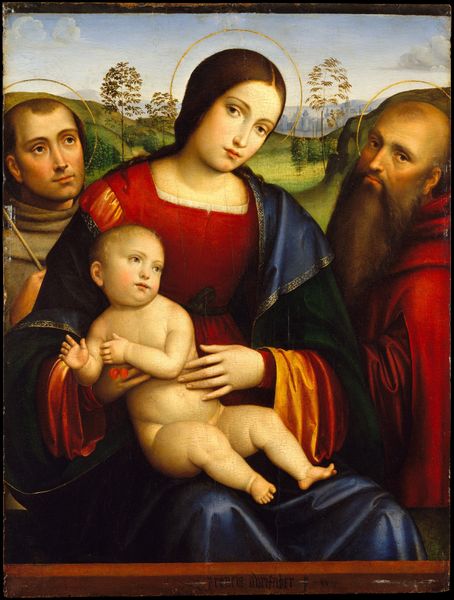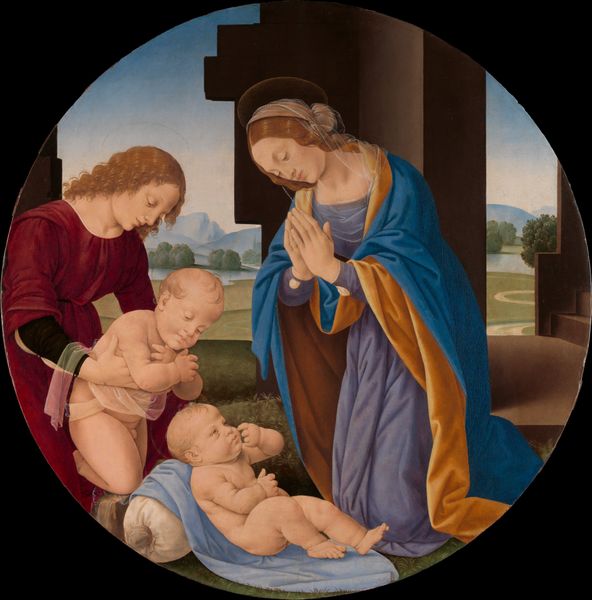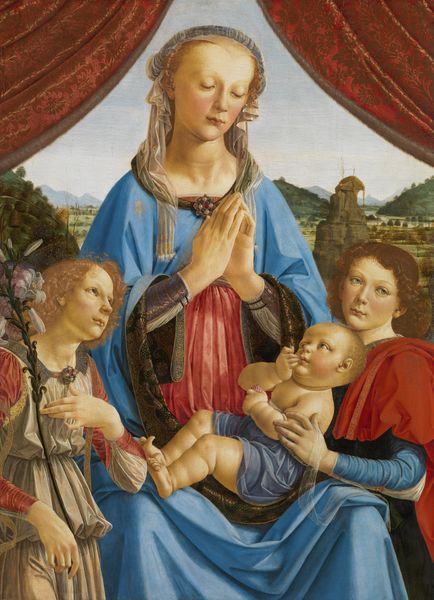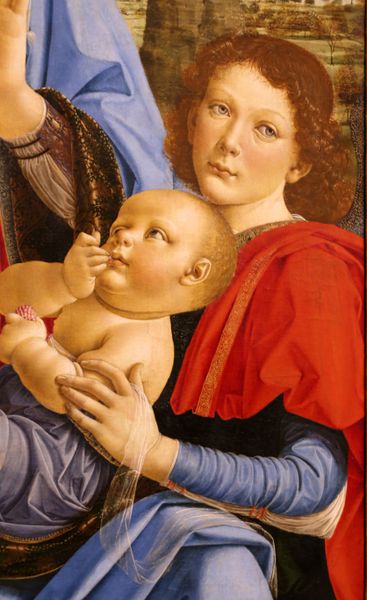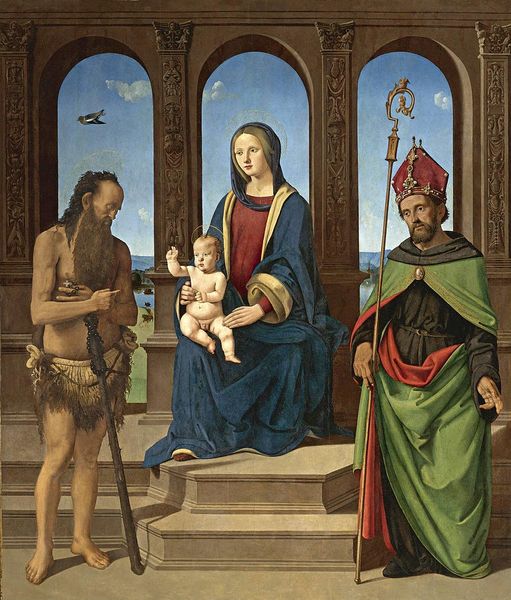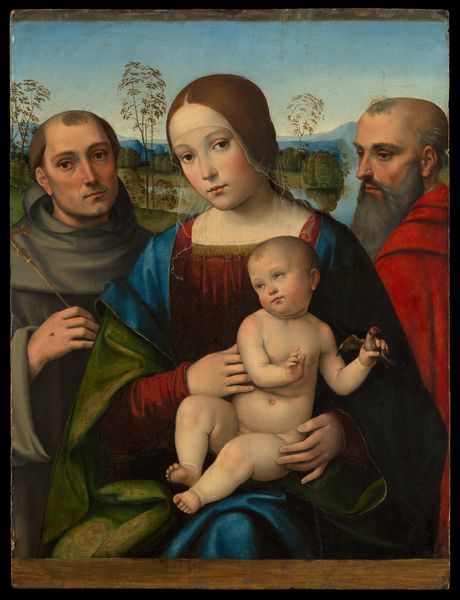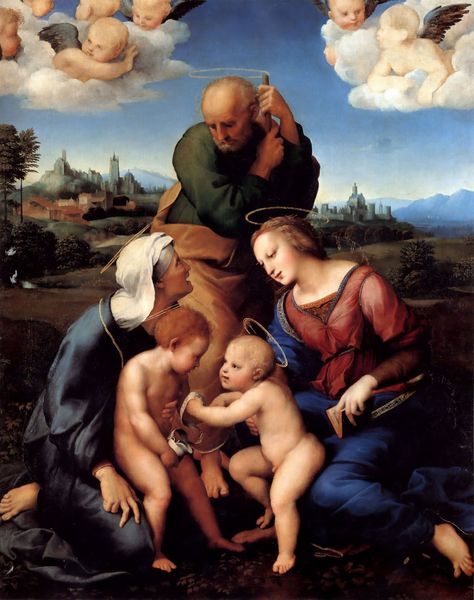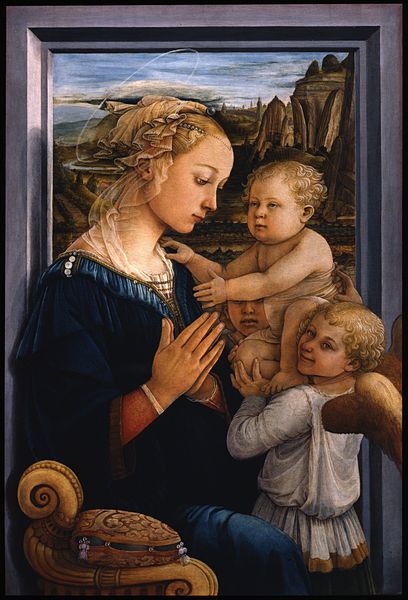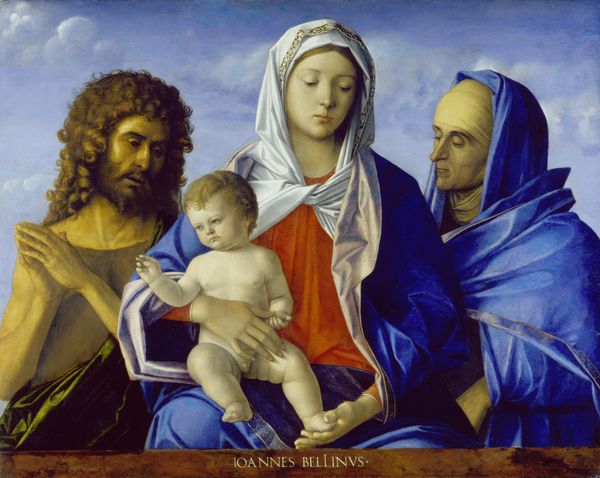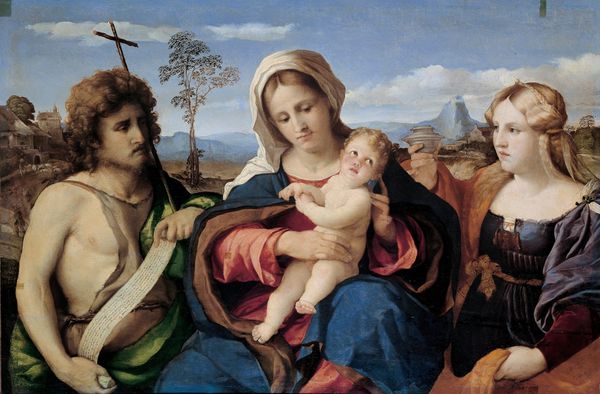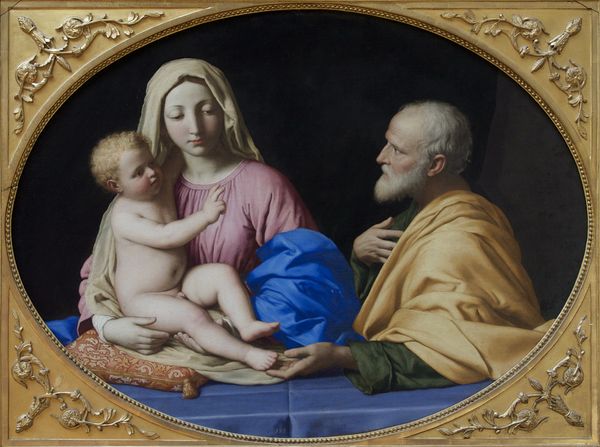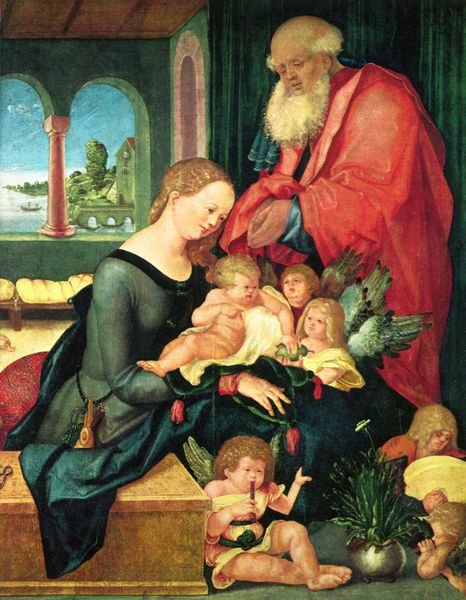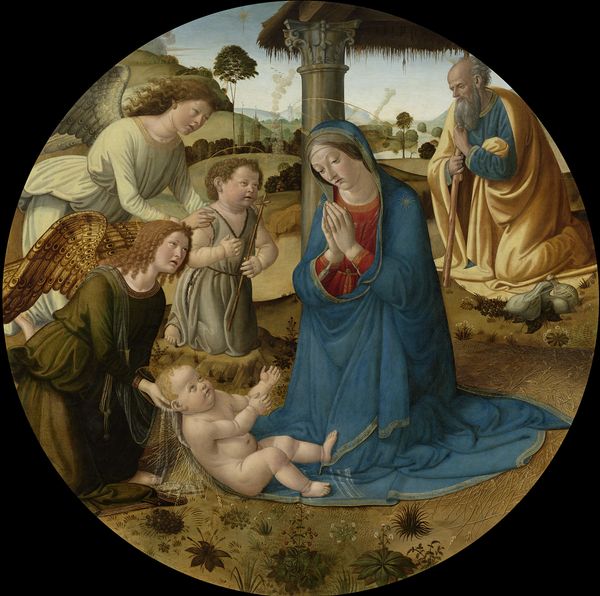
The Holy Family with Elizabeth and Saint John the Baptist as a Boy 1819
0:00
0:00
painting, oil-paint
#
portrait
#
painting
#
oil-paint
#
figuration
#
oil painting
#
child
#
romanticism
#
history-painting
#
portrait art
Dimensions: 136.5 x 99.0 cm
Copyright: Public Domain
Curator: At first glance, I find it quite striking. The figures are rendered with an almost porcelain smoothness, giving it a cool, detached air despite the warmth of the familial scene. Editor: Indeed. And let's set the scene: we're looking at Johann David Passavant's 1819 oil on canvas, "The Holy Family with Elizabeth and Saint John the Baptist as a Boy," which resides here at the Städelsches Kunstinstitut. It is intriguing as an instance of early 19th-century Romanticism attempting to revive older Italian Renaissance styles. Curator: The poses are so deliberate, so carefully arranged. They evoke, as you said, a Renaissance composition, but they lack the immediacy of earlier works. Notice how everyone gazes inwards. It projects almost like a theater scene, quite self-contained and symbolic, and feels idealized in ways that speak to the revival movements in painting at the time. Editor: Precisely. Consider, too, the subtle details loaded with symbolic meaning. For example, the serene, almost melancholic, expression of the Virgin Mary, or Saint John the Baptist’s staff. They speak to the narrative these figures are destined to act out. Passavant uses these symbols, not just to tell a story, but also to evoke complex emotional states associated with destiny and sacrifice. Curator: I am also curious about what the artist intended the Holy Family to convey politically through dress, gesture, and family bonds. Were these paintings intended as affirmations or social reformulations? Editor: These paintings circulated in specific social spheres of the time. Examining those distribution routes can offer insights into what social impact Passavant aimed for in producing these depictions of the Holy Family, what messages he hoped to subtly convey, and what effects this portrayal achieved when publicly exhibited. Curator: Well, considering Passavant's approach and your explanation of social setting, it gives us so much more to appreciate about a family snapshot filled with social commentary. Editor: Precisely; art serves both as a mirror reflecting cultural values and a lamp illuminating hidden narratives. Thank you for sharing this, and allowing this piece to come to life.
Comments
stadelmuseum almost 2 years ago
⋮
The Infant Jesus playfully holds out his arms to the young St John the Baptist, who stands transfixed in pious reverence. Positioned against an idealised southern landscape, the Holy Family forms a perfect triangular composition. Painted in Rome, the work is a programmatic image of Nazarene art. It reflects the enthusiasm of the supporters of this movement for the paintings of Raphael and their desire to arouse the "heart, soul and emotions" of the viewer. As an academic, Passavant also made an in-depth study of Raphael and is regarded as one of the founding fathers of modern art history.
Join the conversation
Join millions of artists and users on Artera today and experience the ultimate creative platform.
